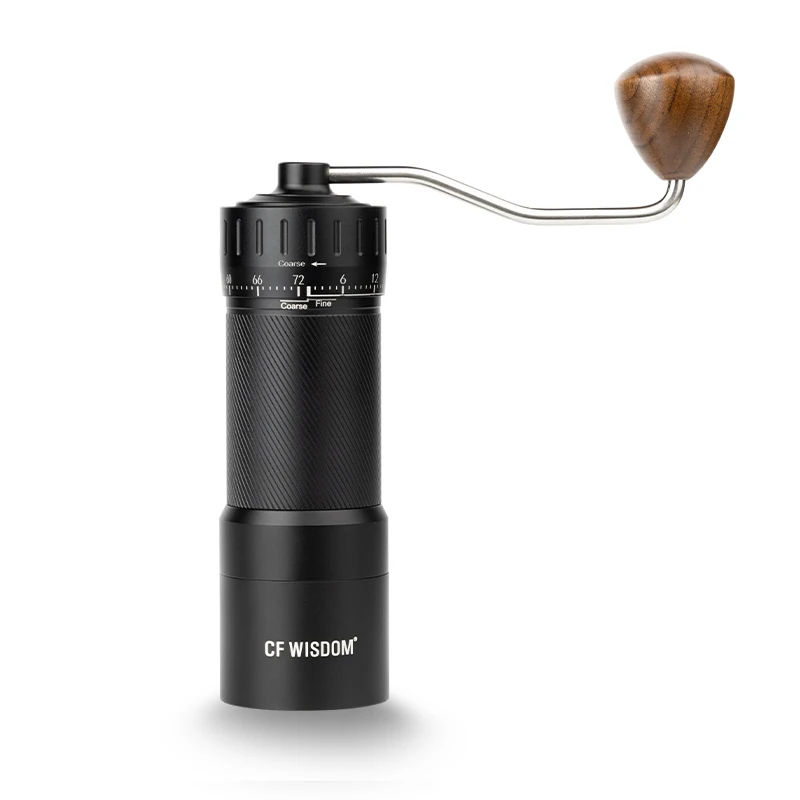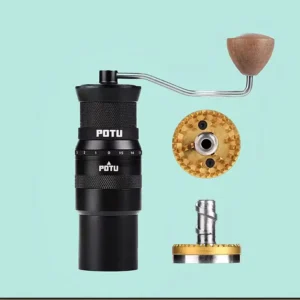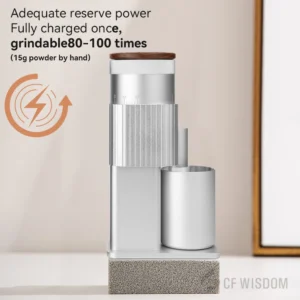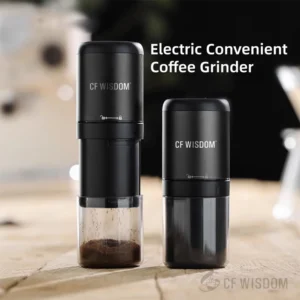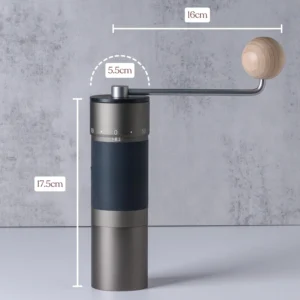Understanding the Importance of Espresso Grind Size
The journey to exceptional espresso begins with one critical element that often doesn’t get the attention it deserves: grind size. This seemingly small detail is actually the foundation upon which great espresso is built. Unlike other brewing methods that can be more forgiving, espresso extraction operates under intense pressure and completes in mere seconds, making the precision of your grind paramount to success.
When brewing espresso, water is forced through compacted coffee grounds at high pressure (9 bars typically). This means the size of your coffee particles directly determines how quickly water flows through the puck, how evenly extraction occurs, and ultimately what ends up in your cup. It’s remarkable how even a 0.1mm difference in grind size can dramatically transform your shot from sweet, balanced perfection to a bitter disappointment or sour failure.
Think of your grind size as the key that unlocks your coffee’s potential flavor. The wrong key (grind size) means you’ll never access what’s truly inside those beans. Understanding precision grind settings for espresso is essential for anyone serious about their home espresso game.
Key takeaways:
– Grind size directly impacts flow rate, extraction efficiency, and flavor profile
– Espresso requires significantly more precision than other brewing methods
– Small grind adjustments lead to dramatic differences in the cup
What Is the Ideal Espresso Grind Size?
The perfect espresso grind has a distinctive fine, powdery texture that feels almost like flour between your fingers. When held up to the light, it should resemble fine powdered sugar or table salt with a touch more fineness. This specific texture creates the necessary resistance against water pressure to ensure proper extraction time and flavor development.
In more precise terms, ideal espresso grounds typically measure between 200 to 400 microns in particle size. Compare this to the much coarser French press grind at 750-1000 microns, and you begin to understand just how fine espresso grounds really are. This fine grind is necessary because espresso extraction happens in just 25-30 seconds, meaning water needs many tiny particles with maximum surface area to efficiently extract flavors.
It’s worth noting that “ideal” isn’t universal across all scenarios. The perfect grind size can vary slightly depending on:
- Coffee bean variety and density
- Roast level (darker roasts typically require slightly coarser grinds)
- Machine pressure capabilities
- Basket size and shape
- Your personal taste preferences
Finding your ideal grind involves a process of experimentation and adjustment to achieve perfect espresso. When done correctly, the result is a balanced shot with sweet complexity rather than overwhelming bitterness or sharp acidity.
The Complete Espresso Grind Size Chart: Visual Reference
Understanding how espresso grind compares to other brewing methods helps put this critical size into perspective. The chart below offers a comprehensive reference for coffee grinding across the spectrum, with special attention to the espresso range:
| Grind Category | Visual Comparison | Texture Description | Brewing Method | Approximate Microns |
|---|---|---|---|---|
| Extra Fine | Powdered sugar | Extremely fine powder, clumps easily | Turkish coffee | 100-200 microns |
| Fine (Espresso) | Fine sugar/salt | Powder-like but with slight grittiness | Espresso | 200-400 microns |
| Medium-Fine | Regular sugar | Sandy texture, finer than table salt | Moka pot, some pour-over | 400-600 microns |
| Medium | Beach sand | Distinct particles, like granulated sugar | Drip coffee, Aeropress | 600-800 microns |
| Medium-Coarse | Raw sugar | Rough sand texture | Chemex, clever dripper | 800-1000 microns |
| Coarse | Sea salt | Distinct chunky particles | French press | 1000-1200 microns |
| Extra Coarse | Rock salt/peppercorns | Very chunky, distinct pieces | Cold brew | 1200+ microns |
Note that different grinders may label these settings differently. The numbers on your grinder (often 1-10 or 1-40) don’t directly correspond to micron size but rather to the relative distance between burrs. This is why understanding the visual and tactile characteristics of each grind size is so important.
The espresso range is particularly narrow, and finding the sweet spot often means making micro-adjustments within this already limited spectrum. Proper espresso grind settings are essential for pulling a balanced shot with proper extraction.
Signs Your Espresso Grind Size Is Wrong
Identifying whether your grind size is off is the first step toward improvement. Here are the clear indicators that your espresso grind needs adjustment:
Too Fine Grind:
– Extraction is extremely slow (more than 35 seconds)
– Coffee barely drips or doesn’t flow at all
– Shot appears dark with thin, dark crema
– Spent puck is muddy and gummy
– Tastes intensely bitter, burnt, or ashy
– May cause machine to struggle or choke
Too Coarse Grind:
– Extraction is very fast (less than 15 seconds)
– Coffee streams out rapidly instead of flowing steadily
– Shot appears pale and watery with little crema
– Spent puck feels loose and falls apart easily
– Tastes sour, sharp, weak or lacks complexity
– Channeling visible (divots or holes in spent puck)
When diagnosing issues, it’s important to rule out other variables. Make sure your dose is consistent (typically 18-20g for a double shot), your tamping pressure is even and consistent, and your machine is properly heated. If these factors are controlled and you’re still seeing the symptoms above, your grind size is most likely the culprit.
For comprehensive help with troubleshooting common espresso grind issues, remember that incremental adjustments will provide the most reliable path to improvement.
How Grind Size Affects Espresso Extraction: The Science
Understanding the science behind extraction helps explain why grind size matters so much. When water meets coffee, it’s not simply dissolving the flavors—it’s participating in a complex extraction process where different compounds leave the coffee grounds at different rates.
Grind size controls this process through surface area exposure. When you grind coffee beans, you’re breaking them into smaller pieces, creating more surface area for water to contact. Finer grinds mean dramatically increased surface area:
- A whole coffee bean has minimal surface area
- Coarsely ground coffee might have 100 times more surface area
- Espresso-ground coffee can have over 10,000 times more surface area than whole beans
This surface area directly dictates extraction speed and efficiency. During the brief 25-30 second espresso extraction:
- First come acids (providing brightness, sourness)
- Then sugars and soluble solids (providing sweetness, body)
- Finally, plant tissue compounds (providing bitterness)
The ideal extraction percentage for espresso typically falls between 18-22% of the coffee’s mass. Below 18% (under-extraction) results in sour, underdeveloped flavors lacking sweetness and body. Above 22% (over-extraction) introduces excessive bitterness and astringency that overwhelm other flavors.
Particle size consistency is equally important. Uneven grinding creates both fine and coarse particles that extract at different rates, making it impossible to achieve balanced extraction. This is why quality burr grinders are essential for espresso, as they produce more uniform particle sizes than blade grinders.
The impact of grind size on espresso extraction is a fascinating interplay of physics and chemistry that directly translates to what you taste in the cup.
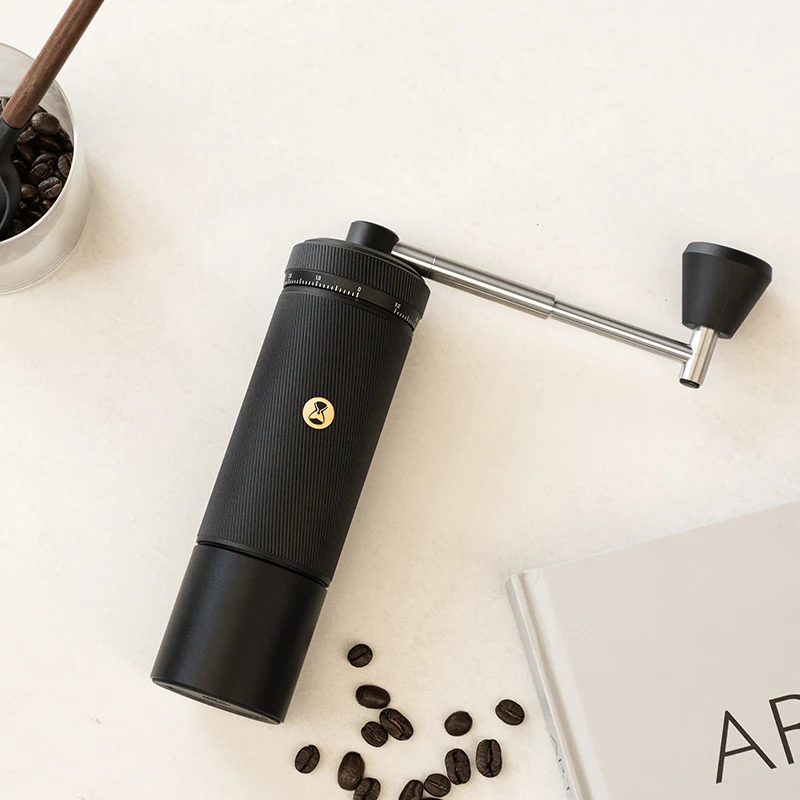
Choosing the Right Grinder for Espresso
Not all coffee grinders are created equal, especially when it comes to espresso preparation. The demanding precision of espresso grinding requires specific equipment capabilities that many general-purpose grinders simply can’t deliver.
Burr grinders are absolutely essential for espresso, as blade grinders produce inconsistent particle sizes that lead to uneven extraction. Within burr grinders, you’ll encounter two main types:
Conical burrs: Shaped like a cone fitting inside a ring, these typically run cooler and quieter, with less retention of grounds between uses. They’re often preferred for single-dosing.
Flat burrs: These consist of two parallel rings that grind coffee between them. They typically produce very consistent particle sizes but may generate more heat and retain more grounds.
When selecting an espresso grinder, prioritize these critical features:
- Adjustment precision: Look for stepless adjustment or very small step increments that allow micro-adjustments.
- Grind consistency: Even particle distribution is crucial for balanced extraction.
- Build quality: Precision-machined burrs made from hardened steel or ceramic will maintain consistency longer.
- Low retention: Less retained coffee means fresher grounds and less waste when changing settings.
Manual grinders can be excellent, cost-effective options for espresso, particularly high-quality models with precision adjustment mechanisms. While they require physical effort, many specialty espresso coffee hand grinders offer exceptional grind quality at lower price points than their electric counterparts.
Electric grinders offer convenience but quality models designed for espresso typically start around $300, with professional-grade options exceeding $1000. The investment pays off in consistency and precision that directly translates to better espresso.
Step-by-Step Guide to Dialing In Your Espresso Grind
Finding your perfect espresso grind setting requires a methodical approach. Follow these steps to systematically discover the optimal grind for your specific beans, machine, and taste preferences:
Start with a baseline setting: Begin with your grinder at its recommended espresso setting. If no recommendation exists, start with a fine setting that resembles powdered sugar.
Maintain consistent variables: Keep all other factors constant for accurate testing:
– Coffee dose (typically 18g for a double shot)
– Water temperature (typically 195-205°F/90-96°C)
– Tamp pressure (firm and level)
– Target output (typically 36g of espresso from 18g of coffee)Pull a test shot and evaluate flow rate: Aim for 25-30 seconds to achieve your target yield. Time from the moment you start the pump.
Assess the extraction:
– If the shot pulls too quickly (under 20 seconds), your grind is too coarse
– If the shot pulls too slowly (over 35 seconds), your grind is too fineMake a measured adjustment: Change only the grind size, making small increments:
– If too fast: adjust one or two clicks finer
– If too slow: adjust one or two clicks coarserPurge the grinder: Run a small amount of beans through after each adjustment to clear any old grounds.
Pull another shot and evaluate: Continue the process until you achieve the target 25-30 second extraction.
Taste and fine-tune: Even with correct timing, taste is the ultimate judge:
– If sour or weak: go slightly finer
– If bitter or harsh: go slightly coarserDocument your successful setting: Note the grinder setting, bean type, roast date, and environmental conditions for future reference.
This dialing-in process typically requires 3-5 attempts before finding the optimal setting. Be patient—each coffee may require slight adjustments, but the methodical process remains the same. For precise adjustments, fine adjustment hand grinders with clear calibration systems can be particularly helpful.
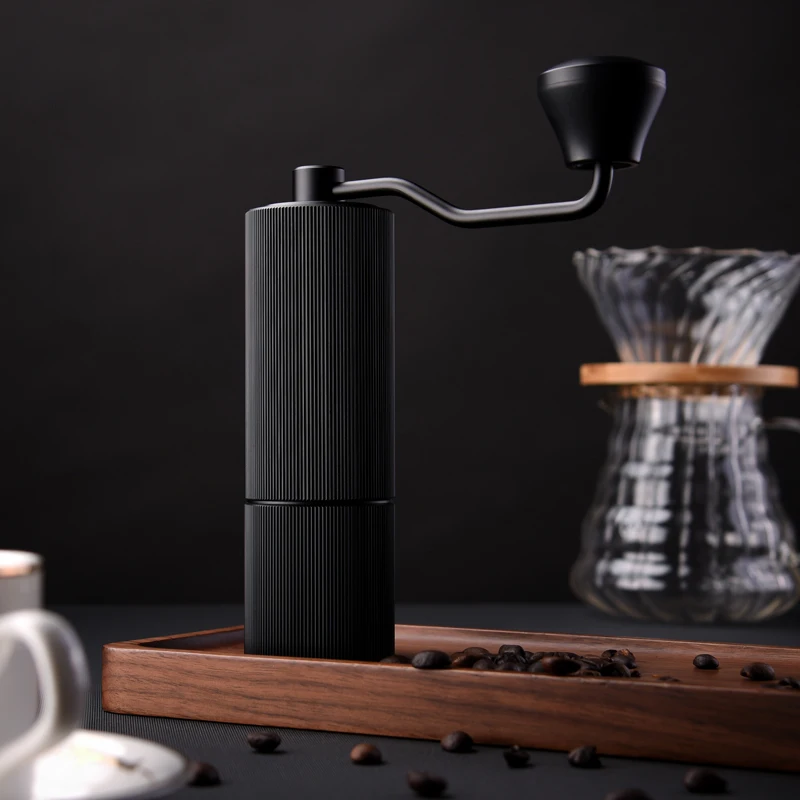
Troubleshooting Common Espresso Grind Issues
Even experienced home baristas encounter grinding challenges. Here are solutions to the most common issues:
Q: Why does my espresso shot channel despite proper grind size?
A: Channeling often results from distribution problems rather than grind size alone. Try using the WDT method (stirring grounds with a fine needle tool) before tamping to break up clumps and ensure even distribution.
Q: Why do my shot times vary despite using the same grind setting?
A: Inconsistent shot times usually stem from inconsistent dosing or tamping. Use a scale accurate to 0.1g and develop a consistent tamping technique. Also check if your grinder produces consistent amounts each time.
Q: Why does my grinder produce clumpy espresso grounds?
A: Clumping typically occurs with finer grinds, especially with fresher, oilier beans. The Ross Droplet Technique (adding a tiny drop of water to beans before grinding) can reduce static and clumping. Some grinders also benefit from aftermarket declumper modifications.
Q: My shots run faster as I continue pulling shots. Why?
A: Grinders heat up during use, which can affect grind size. This “grind drift” is common in many grinders. Allow time for cooling between sessions or consider a grinder designed to minimize heat buildup.
Q: My grinder adjustment doesn’t seem to affect extraction time. What’s happening?
A: You may be experiencing burr alignment issues or retention problems. Ensure the grinder is clean, as retained grounds can mix with fresh grounds and mask adjustment changes. Some grinders require “purging” after adjustments.
Understanding the 30-second espresso rule provides context for many of these troubleshooting scenarios, as extraction time is a key indicator of proper grinding.
Fine Adjustment Hand Grinder, Precision Manual Grinder, Travel Coffee Grinder
Price range: $185.11 through $494.63 Select options This product has multiple variants. The options may be chosen on the product pageHand Burr Grinder, Hand Crank Coffee Grinder, Manual Espresso Grinder, Portable Coffee Grinder
Price range: $262.72 through $300.22 Select options This product has multiple variants. The options may be chosen on the product pageHand Burr Grinder, Manual Coffee Grinder Stainless Steel, Precision Manual Grinder
Price range: $183.64 through $187.52 Select options This product has multiple variants. The options may be chosen on the product pageManual Coffee Grinder Stainless Steel, Manual Espresso Grinder, Travel Coffee Grinder
Price range: $276.22 through $276.39 Select options This product has multiple variants. The options may be chosen on the product pageHand Crank Coffee Grinder, Manual Coffee Grinder for Espresso, Manual Coffee Grinder Stainless Steel
$349.15 Select options This product has multiple variants. The options may be chosen on the product page
How Different Coffee Variables Affect Grind Size
While understanding the baseline for espresso grind is essential, numerous variables can require adjustments to your grind setting:
Bean Origin and Density:
– Denser beans (often from higher altitudes) typically require finer grinding
– Softer beans (often lower altitude or naturally processed) may need coarser grinding
– Different bean varieties can extract at different rates despite identical grind settings
Roast Level:
– Darker roasts are more brittle and extract more easily, typically requiring a slightly coarser grind
– Lighter roasts are denser and need finer grinding to achieve proper extraction
– The relationship between roast levels and grind size is crucial for consistent results
Bean Age and Freshness:
– Fresh beans (3-14 days after roasting) release more CO2 during extraction, requiring slightly coarser grinding
– Older beans (2+ weeks after roasting) typically need progressively finer grinding as they age
– Frozen beans may require different settings than room-temperature beans
Environmental Factors:
– Higher humidity can cause grounds to absorb moisture and extract differently
– Seasonal changes often necessitate grind adjustments as ambient conditions shift
– Room temperature can affect both beans and equipment, influencing extraction
Being aware of these variables helps explain why the “perfect setting” from last week might not work today. Developing sensitivity to these factors and adjusting accordingly separates good espresso from great espresso.
Creating Your Own Espresso Grind Size Reference System
Developing a personal reference system will save you time and coffee in the long run. Here’s how to create your own grind size management approach:
Start a coffee journal: Document each successful extraction with:
– Grinder make and model
– Specific numeric setting used
– Bean type, origin, and roast date
– Dose weight and yield weight
– Extraction time
– Taste notes and satisfaction ratingCreate physical references: Save small samples of successful grinds in labeled, airtight containers for visual comparison.
Photograph successful grinds: Take close-up photos of your grounds against a consistent background with good lighting.
Map grind settings to specific beans: Create a simple chart showing which settings work best for your regular beans.
Note seasonal adjustments: Track how environmental changes affect your optimal settings throughout the year.
Sample grind log entry:
“Ethiopian Yirgacheffe, medium-light roast, 5 days post-roast, Grinder setting: 2.5, 18g dose → 36g yield in 28 seconds. Bright acidity with floral notes. Slightly finer than previous setting improved sweetness.”
This approach is particularly valuable when using precision manual grinders with clear, repeatable settings, as it creates a personalized resource that grows more valuable over time.
Do You Need to Adjust Grind Size Daily?
Many coffee enthusiasts wonder if daily grind adjustments are necessary or if they’re being overly fussy. The truth lies somewhere in between and depends on several factors:
Bean aging: As coffee ages (even by just a few days), it typically requires progressively finer grinding to maintain the same extraction quality.
Ambient conditions: Seasonal and even daily changes in humidity and temperature can affect how coffee extracts. Summer months often require slightly coarser grinding than winter months due to humidity.
Equipment temperature: Your grinder and espresso machine perform differently when cold versus fully warmed up.
For best results, expect to make minor adjustments every few days, with more significant changes when switching to new beans or experiencing major weather shifts. Using a high-quality manual espresso grinder can provide the consistency and adjustment precision needed to accommodate these variables.
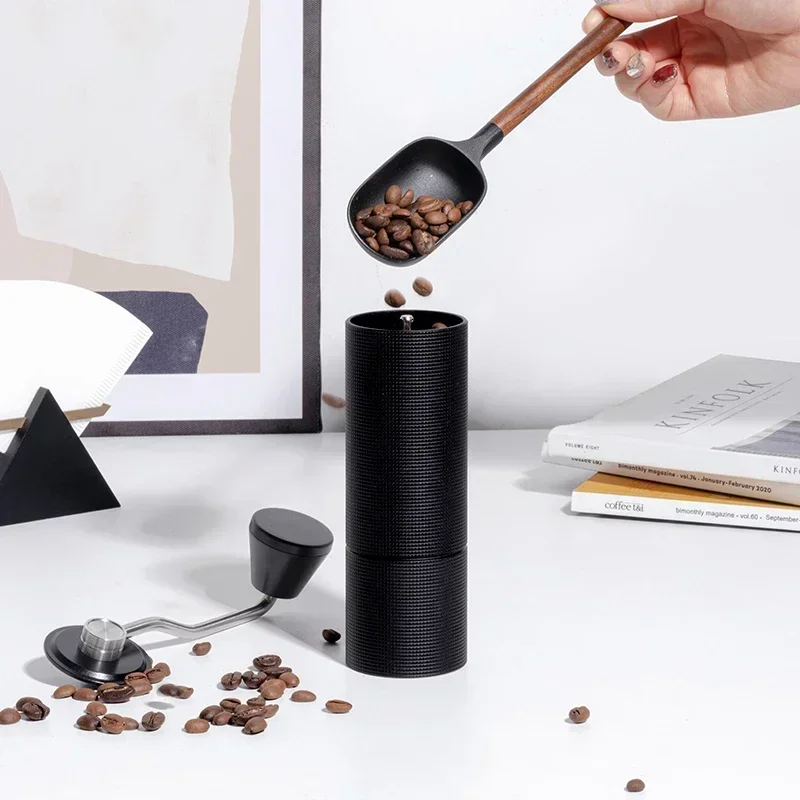
Can You Use Pre-Ground Coffee for Espresso?
While fresh grinding is strongly recommended for espresso, the question of pre-ground coffee deserves an honest assessment:
Limitations of Pre-Ground Espresso Coffee:
– Oxidation begins immediately after grinding, with significant flavor loss within 15-30 minutes
– Pre-ground coffee may not match the exact fineness needed for your specific machine
– No ability to adjust grind to compensate for aging, humidity changes, or extraction issues
– Often ground for “universal” espresso use, which is a compromise at best
When Pre-Ground Might Be Acceptable:
– When traveling without access to a grinder
– As a temporary solution while saving for a quality grinder
– For super-automatic machines that are calibrated for specific pre-ground coffee
If you must use pre-ground coffee, purchase in small quantities from specialty roasters who grind specifically for espresso, store in an airtight container away from light and heat, and use within 3-5 days maximum. For consistently better results, even an entry-level manual coffee grinder for espresso will produce dramatically improved flavors compared to pre-ground coffee.
Expert Tips for Espresso Grind Consistency
Once you’ve mastered the basics, these professional techniques can help elevate your espresso grinding precision:
RDT (Ross Droplet Technique): Add a tiny drop of water to beans before grinding to reduce static electricity and clumping. Simply wet your finger, touch the inside of a clean cup, then stir beans in the cup before grinding.
Single Dosing: Measure each dose individually rather than filling the hopper. This ensures freshness and allows beans to move through the burrs more consistently.
WDT (Weiss Distribution Technique): Use a fine needle tool to stir grounds in the portafilter, breaking up clumps and ensuring even distribution before tamping.
Temperature Management: For consistent results, either use your grinder at the same time each day or allow it to run briefly before making adjustments, as temperature affects performance.
Purging Between Adjustments: When changing grind settings, run a small amount of beans through the grinder to clear the pathway of previous grounds.
Regular Cleaning: Clean your grinder regularly to prevent oil buildup and ensure consistent performance. This is particularly important for espresso grinding, as the fine settings can lead to more retention and clogging.
For more advanced techniques and methods to achieve consistent espresso grinding results, continuous experimentation with controlled variables will yield the best insights for your specific setup.
Final Thoughts: The Journey to Perfect Espresso
Mastering espresso grind size is not a destination but a continuing journey. The perfect extraction requires ongoing attention and adjustment as beans age, seasons change, and your taste preferences evolve. Every cup becomes an opportunity to refine your approach and deepen your understanding.
Remember that “perfect” is ultimately subjective. While timing, ratios, and technical measurements provide important guidelines, your personal taste preference is the final arbiter of success. Some coffee lovers prefer the bright intensity of slightly under-extracted shots, while others enjoy the richness of fuller extraction.
The effort you invest in understanding and controlling grind size pays enormous dividends in cup quality. The difference between mediocre and magnificent espresso often comes down to just fractions of a millimeter in grind size, but that small difference transforms what’s possible in your cup.
As you continue exploring the world of espresso, embrace the variables rather than fighting them. Document your successes, learn from less successful attempts, and appreciate the craftsmanship involved in producing truly exceptional coffee at home. With quality tools, attention to detail, and a willingness to experiment, you’ll find your perfect espresso is always within reach.

